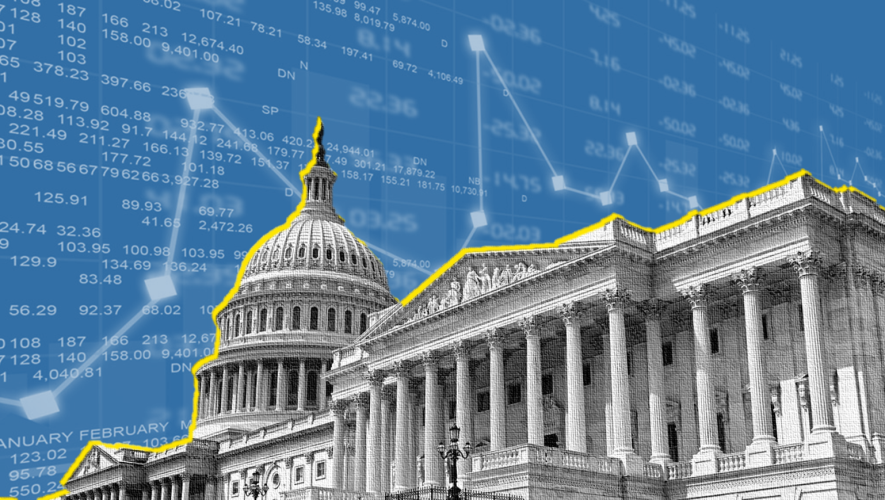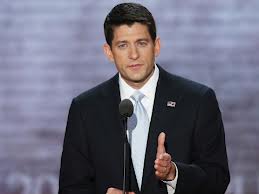With the Fiscal Responsibility Act of 2023 (“FRA”), the Biden administration boasts its commitment to bipartisanship at a time when political polarization reigns. The act follows months of contentious negotiations and allows Democrats to raise the debt ceiling—the maximum amount of money that the government can borrow—so long as they implement Republicans’ federal spending restraints. In his speech detailing the final agreement, Biden announced: “No one got everything they wanted, but the American people got what they needed.”
While debt limit negotiations yielded wins for both parties, many Americans do not understand the extent to which the debt ceiling impacts the US economy or the consequences of defaulting on federal debt. We avoided a national default this year, but the debt ceiling conflict is far from over. The FRA is only a temporary solution to a persistent and pervasive issue.
If the government fails to meet its financial obligations, the US stock market could suffer major losses and millions of Americans could lose out on social security payments, medicare, and more. Small business owners would lose their loans, parents would struggle to support their families, low-income patients would lose access to affordable healthcare—everyone is a potential victim.
Because congressional debates surrounding the debt ceiling crisis have far-reaching effects on the American public, we must make an effort to stay informed. Americans cannot defend themselves against a problem they don’t know exists, let alone a problem they don’t understand.
When Defaults Hit, Disaster Strikes
For the US government, the only alternative to lifting the debt ceiling is defaulting on prior financial obligations; the government relies on borrowing money to pay off expenses that we’ve already committed to. The government reached its $31.4 trillion debt limit in January and exhausted all extraordinary measures—alternative methods of borrowing funds—in an effort to meet obligations amidst negotiations.
Government officials use the term “X-date” to refer to the moment the US defaults on its debt. According to the White House, X-date could raise unemployment rates, reverse job growth, disrupt consumer spending, and shut down the short-term funding markets that finance day-to-day investments. Everyone from individual consumers to major corporations would feel its effects.
Economists predict that even a short breach of the debt ceiling could cost up to two million jobs, raising the unemployment rate from 3.5 percent to 5 percent and putting pressure on millions of households amidst a fragile economy.
Breaching the debt ceiling would also detract from our current economic strengths. Treasury bonds, which economists typically consider risk-free, would face increased scrutiny from investors all over the world. Analysts forecast that this shift could introduce approximately $750 billion of additional federal borrowing expenses.
At a time already plagued by economic uncertainty and high inflation, X-date looms over both Democrats and Republicans; both parties cannot risk passing X-date, but they both leverage X-date as a bargaining chip for their own demands. This creates a game of “chicken” between the congressional left and right, placing party politics above national economic safety. As our nation loses its ability to foster cross-party accommodations, X-date inches closer and closer.
The Biden administration passed the FRA in a desperate final attempt to avoid economic catastrophe.
However, everything we know about the repercussions of X-date is hypothetical: X-date hasn’t happened yet, and there is no historical precedent to rely on. Throughout US history, Congress has amended the debt limit to delay X-date 78 times. The US government narrowly escaped X-date in 2011 after political discussions that mirrored today’s debates culminated in the Budget Control Act of 2011 (“BCA”).
The BCA, like the FRA, featured partisan debates that attempted to both raise the debt ceiling and limit federal spending. The BCA raised the debt limit by $2.1 trillion and cut funding for discretionary programs like education, low-income housing assistance, medical research, and defense. Unlike the BCA, the Fiscal Reduction Act does not increase the debt limit by a fixed monetary value. Rather, it suspends the debt ceiling until the next presidential election, during which the debt ceiling will increase by however much the US government borrows.
We All Win If We All Lose
Compared to last year, more voters care about budget deficit reductions: when polled about policy priorities, 57% of respondents, both Democrats and Republicans, indicated that managing the deficit should be a leading factor within public policy discussions. However, the budget deficit remains a primarily Republican issue, concerning 71% of right-leaning respondents and 44% of left-learning respondents.
Republicans fear that suspending the debt limit enables excessive deficit spending; a higher debt ceiling provides the government more funds to borrow. Without careful restraint, Republicans worry that the national debt will spin out of control. Higher debt leads to higher interest costs, which in turn, crowds out spending for programs that directly benefit citizens. High deficits could steal funding from areas like education, social security, and medicare.
US House Speaker McCarthy represented Republican interests in negotiating for tighter spending restraints. For Republicans, the final agreement establishes a 2-year cap on discretionary spending, cuts $20 billion in I.R.S. enforcement funds, restricts access to food stamps, and more.
These cuts and compromises counteract the Biden administration’s Inflation Reduction Act of 2022 (“IRA”), which marked Democrats’ attempt at expanding clean energy and fighting climate change. Environmentalists and progressives disapprove of the FRA’s concessions, particularly the approval of the Mountain Valley Pipeline, a three-hundred mile natural gas pipeline that cuts through the Jefferson National Forest, as well as several waterways and wetlands.
Nevertheless, some Republicans are underwhelmed by the moderate spending cuts and misled by broken campaign promises, highlighting the divide between center-right and far-right Republicans.
Far-right Rep. Ken Buck from Colorado nicknamed the FRA the “bipartisan bankruptcy” plan. According to Buck, though the FRA appeals to Republicans in theory, none of its compromises are binding: the federal government has targets, but no consequences for missing those targets. Center-right Rep. Dusty Johnson from South Dakota, on the other hand, pushed back against McCarthy and hailed the FRA as a “historic accomplishment“.
Originally, Republicans wanted 10 years of spending caps, deeper spending cuts, stricter work requirements, and the repeal of eco-friendly tax incentives worth hundreds of billions of dollars—requests ultimately absent from the FRA. The GOP’s proposed bill aimed to save $4.8 trillion, over three times that saved by the FRA. With adjustments and side-deals, the final FRA will save the US government approximately $1 trillion.
Although the debt limit deal doesn’t quite placate all parties, the Biden administration’s approach to debt negotiations extends an olive branch to the GOP. Many progressives called upon Biden to invoke the 14th Amendment, circumvent Congress, and override the statutory borrowing limit instead of passing the FRA. Participating in good-faith negotiations demonstrates genuine bipartisanship. Even so, when the debt limit is reinstated in January 2025, Democrats and Republicans must yet again decide whether to act at each other’s expense or in each other’s favor. When this time comes around, the American people must prepare measures to ensure their own economic stability.
Families across the country should take a good look at their current finances. If we face a severe economic downturn, having a clearer picture will allow citizens to make smarter decisions. We must invest in emergency funds, limit unnecessary expenses, and stock up our savings accounts to take advantage of higher interest rates—stay grounded, look forward, and think before you spend.
Economic reforms have widespread impacts that distinctively impact different socioeconomic groups and political parties. The debt ceiling crisis is unique in that X-date creates chaos for all parties involved, putting significant pressure on representatives to come to a compromise that meets constituent approval. The FRA cannot, by nature, perfectly address bipartisan concerns, but it provides a framework for understanding each parties’ long-term goals and our country’s economic future. If citizens ignore the multifaceted realities of federal spending and debt, they will be unable to protect themselves and their loved ones from economic harm.



